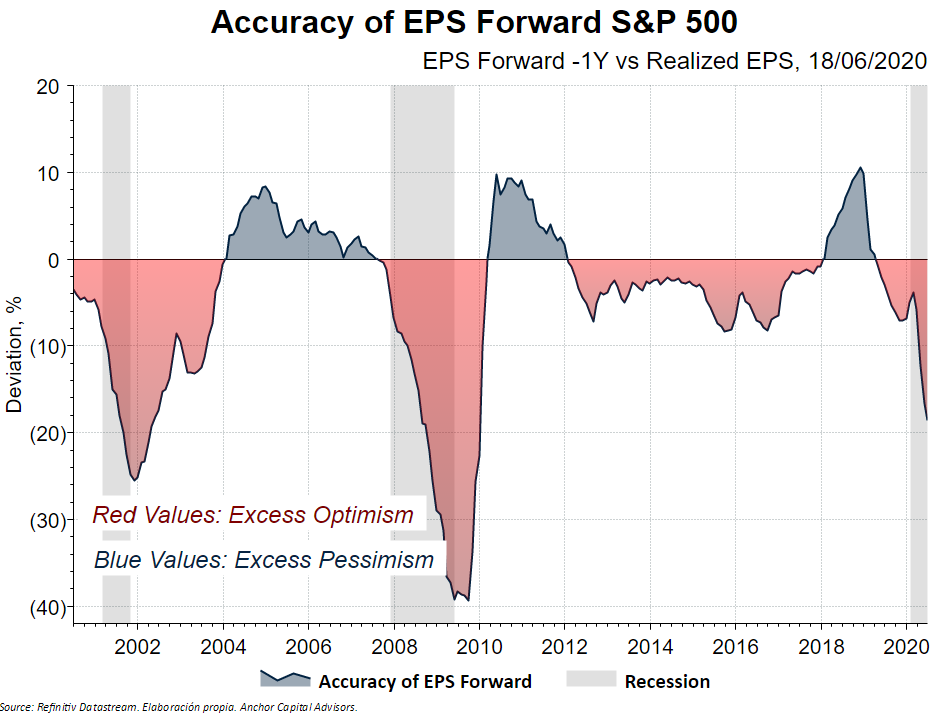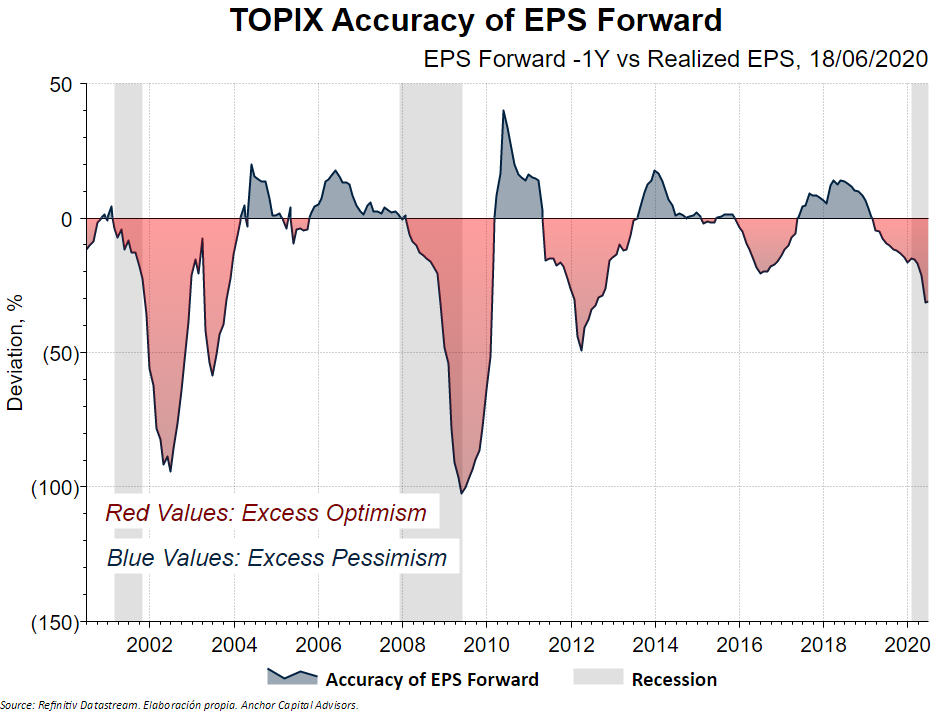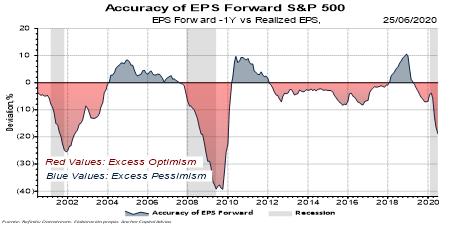Analysts Are Too Opimistic
No one has a crystal ball to predict the future. Neither do financial analysts. Many times, when we talk about one-year EPS predictions, we assume them as valid, without questioning whether these, historically, have been correct.
This problem is shown in the following graph, where we can see the difference between the Earnings Per Share (EPS) predictions for the following year, made one year before, and the actual EPS when published.

What happens is that the market consensus is optimistic: EPS estimates are inflated because analysts tend to project the most recent trend. Later, when the year has passed, they contrast their prediction and they see that the EPS are lower than what they predicted one year before.
Because crises are difficult to predict, it is normal for this indicator to take negative values during economic recessions.
In any case, if we remove the periods of crisis, we can observe a certain tendency to project higher expected benefits, with which it can be concluded that the estimates are not very reliable.
Similarly, during the 2008 crisis, earnings projections were too pessimistic, and earnings recovered better than expected. Something similar may be happening now during the Covid-19 crisis.
Japan is a curious case: the deviations from the estimated EPS are much larger and take values of -30% easily.

Typically, as the year goes by, these EPS are more closely aligned with reality, and the reality is that they are lower than predicted a year ago. Perhaps, as humans we are optimistic by nature, and analysts are no less so.


